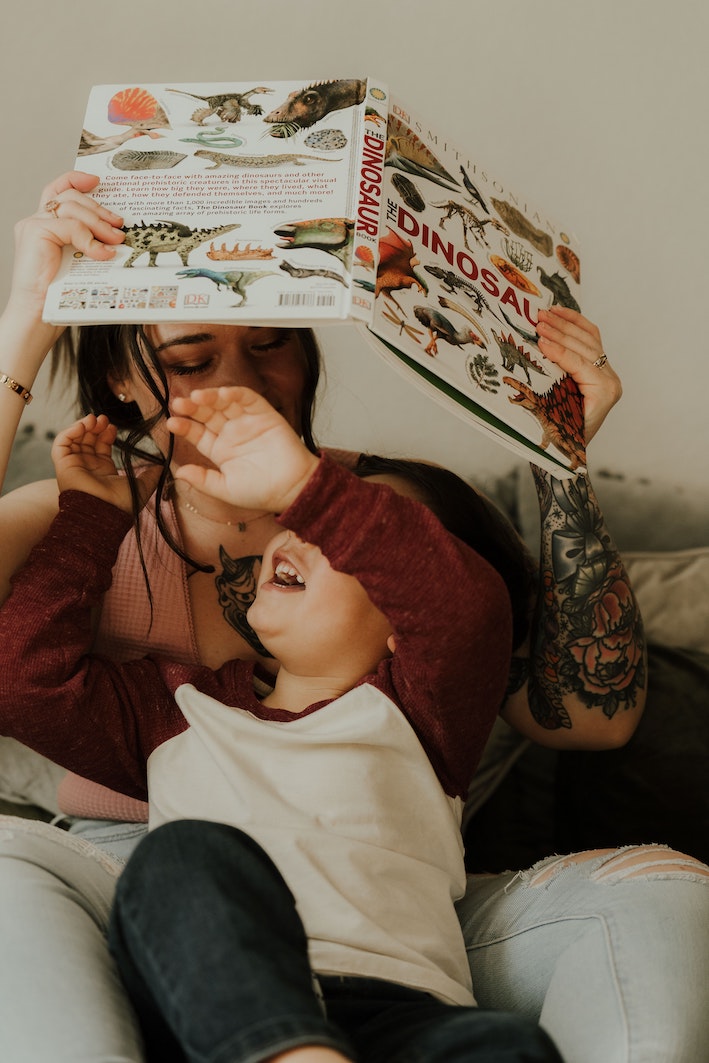I knew—whether by instinct or memory—that when we got to the chapter titled “Indians in the house” I was going to have to tread with caution.
In fact, two-thirds of Laura Ingalls Wilder’s classic Little House on the Prairie, which I was reading to my six-year-old, turned out to be an exercise in verbal gymnastics.
The first hurdle was the term “Indian.”
I paused, explained the term to my daughter, told her that this was an old word to refer to First Nations people, and that, even back then, it was disrespectful, erroneous, and racist—I didn’t use those exact words, I said something like the word “Indians” was wrong and unkind and wasn’t how they referred to themselves. She seemed to get it.
Dammit Clifford pic.twitter.com/naTlJpg6rT
— Waubgeshig Rice (@waub) October 28, 2021
Storytime is usually the last thing a parent or a grandparent does with a child at the end of the day. Half-asleep, exhausted, and, admittedly, a little desperate to get through the book so I can plop down onto the couch, I rarely have energy left to engage my children into conversations about race.
So in lieu of having a conversation, I tried other strategies.
Initially I self-edited: every time I encountered the word “Indian” I changed it to First Nations. It was exhausting—especially the number of times the word popped up in chapters: “Indians in the House,” “Indian Camp” and the “Tall Indian”. As I got into my groove of reading, developing a certain pace and cadence, I would inevitably read aloud “Indian”. When that happened, I awkwardly paused, and glanced nervously at my daughter to see if she’d noticed (she hadn’t… or maybe she had? She had the same glazed look I had, given the time of day). Whatever. I continued. But this strategy proved next to impossible when it came to a chapter entitled, “Prairie Fire”. A conversation between Mr. Edwards and Mr. Scott—neighbours of the Ingalls family on the prairie—goes like this:
“Mr. Edwards said there were too many Indians in those camps; he didn’t like it. Mr. Scott said he didn’t know why so many of those savages were coming together, if they didn’t mean devilment. ‘The only good Indian is a dead Indian,’ Mr. Scott said.”
I was dumbfounded. What do I do now? The momentary pause over this paragraph suddenly and uncomfortably lingered as I raced to figure out whether to read it, change it, or skip over it—and if I did the latter, would it matter to the narrative? This pause being much longer, and maybe stranger, it did finally cause my daughter to ask what the matter was.
I didn’t know what to say. I didn’t think I could explain this chapter’s prejudice pretzel to my daughter; nor am I that good of an editor to, on the fly, change all of the words. I didn’t think I could explain such harsh, hateful language either. So, I skipped over it, hoping this particular part of the story wouldn’t affect the narrative. It didn’t. She’s six after all.
We got through that chapter, said goodnight, and I turned out the lights, but an uncomfortable feeling stuck with me as I couch-plopped.
Something I asked myself afterwards, was why I had chosen this book to read in the first place? Was reading about pioneers really relevant for my daughter? There are tonnes of other good children’s books I could’ve chosen to read instead, so why this one?
Since Little House on the Prairie was part of my past, I think it’s understandable that I wanted to share the fun I had reading about pioneer life with my daughter. But I’m white and, as such, I—and my daughter —didn’t belong to one of the groups in Wilder’s stories being negatively targeted. What if I had belonged to one of these groups? Would I have read these books as a child in the first place? Would I have been as endeared to them? And, would I have shared them with my daughter now?
In terms of expert advice, Po Bronson and Ashley Merryman, authors of NurtureShock: New Thinking About Children, suggest parents speak with children about race—and early on. The authors posit that children are not colour blind, in spite of the fear adults sometimes express over pointing out such specificities. The same goes for gender, sexuality, and other human traits and distinguishing features found throughout classic children’s literature.
Philip Nel, author of Was the Cat in the Hat Black?: The Hidden Racism of Children’s Literature and the Need for Diverse Books argues that reading racist books to kids, whether or not they are a targeted group, can do damage. But he also argues: “You have to begin anti-racist education and anti-discrimination education as soon as you can. Racist classics of children’s literature—read in context—can provide an opportunity for education.”
This makes me think of my own experience reading racist literature.
I was a big fan of Tintin books growing up, which I had inherited from my uncle and my mother. Hergé’s scrappy, adventurous journalist and his white dog Snowy and their global adventures (or, looking back, adventures as colonists?) fascinated me—as they now do with both my daughters. I just hadn’t noticed that all of the non-white characters in the comic books were usually gross, racist characterizations. For example, Hergé cruelly depicts Black people with exaggerated and distorted features, such as always having oversized lips and acting in a subservient and/or buffoonish manners for comedic purposes. (Other groups, such as the Japanese, Chinese, and Indigenous people, endure similar treatment in Tintin books.)
I thought I had collected the entire catalogue of Tintin books, until, as an adult, I visited Belgium and discovered one that was never listed as available in North America: Tintin in the Congo. Given Belgium’s horrific history with that African country, and Hergé’s already racist depictions of Black people, you can probably imagine why North American booksellers kept this one off the shelves.
But I bought it nevertheless. I was an adult, I understood the context, and I wanted the complete Tintin collection. I’ve since passed on my collection to my 12-year-old. Even though I’ve explained to my daughter the racist depictions in it and Belgium’s history with the Congo, my wife continues to squirrel Tintin in the Congo away to the basement.
My wife’s argument remains that reading books contextually, together, is one thing; but, out of all the positive books out there, our children shouldn’t be left alone to absorb and normalize such racist imagery. Just because it’s old and part of a collection, doesn’t mean it should be valued. This begs the question: is shelving certain books okay? Or do we drag out every racist book and use them as teachable moments?
Perhaps it is easier to simply not read these books anymore. After all, the children’s book industry in the U.S. made an estimated two billion dollars in 2021. If you’re not planning on having a conversation with the little ones about the content, then this is probably the best route to take.
Self-editing without explanation isn’t really a solution; at some point you’ll slip up and read aloud something you didn’t want to. Moreover, your children will likely read the book for themselves when they’re older, but won’t have the understanding behind what’s been written to navigate the language or content successfully.
I think our desire as parents or grandparents to share books we loved as children with others is valid. But, like Nel says, we need to also be prepared to have conversations with our children about it. When we encounter difficult language or subject matter, we can choose to use these as “teachable moments.”
There may be better books to read to our children/grandchildren, certainly. But shying away from difficult conversations, even at bedtime, is not the best option—for them or us.
The Raising Race Conscious Children blog is written by Sachi Feris, who holds an MA in Sociology and Education from Teachers College, Columbia University, and an M.P.A. in Public Policy from Baruch College’s School of Public Affairs. There, this mother of three says:
“We can start talking about race even if we don’t have all the answers. We can start talking about race even if we are afraid we will say the wrong thing. It is inevitable that we will make mistakes—that’s a part of the process. But if we commit to collectively trying to talk about race with young children, we can lean on one another for support as we, together, envision a world where we actively challenge racism each and every day. It starts one conversation at a time.”
I don’t have all the answers. Maybe none. In spite of the expert advice, I find myself still asking questions and wavering between whether to share my childhood books or not, and if I do, what strategy to use.
But, despite how exhausted I may be at the end of the day, I have decided that, if I choose to share certain books with my children, I will also accept the responsibility I owe them to have that conversation.

